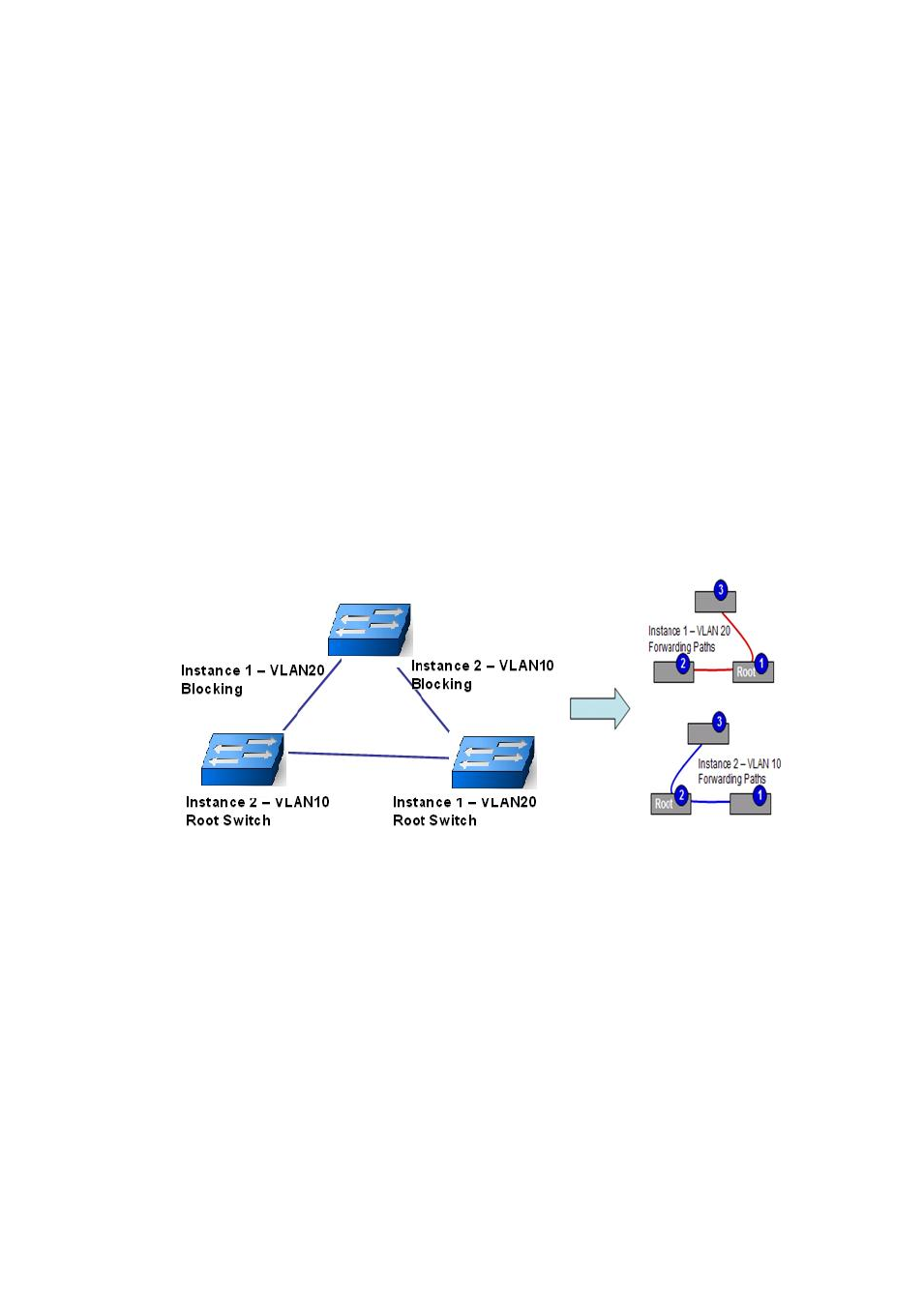Westermo MDI-112-F4G User Manual
Page 68

64
with IEEE 802.1D STP).
While using MSTP, there are some new concepts of network architecture. A
switch may belong to different groups, act as root or designate switch, generate
BPDU for the network to maintain the forwarding table of the spanning tree.
With MSTP can also provide multiple forwarding paths and enable load balancing.
Understand the architecture allows you to maintain the correct spanning tree and
operate effectively.
One VLAN can be mapped to a Multiple Spanning Tree Instance (MSTI). For
example, the maximum Instance of the Managed Switch supports is usually 16,
range from 0-15. The MSTP builds a separate Multiple Spanning Tree (MST) for
each instance to maintain connectivity among each of the assigned VLAN groups.
An Internal Spanning Tree (IST) is used to connect all the MSTP switches within an
MST region. An MST Region may contain multiple MSTP Instances.
The figure shows there are 2 VLANs/MSTP Instances and each instance has its
Root and forwarding paths.
A Common Spanning Tree (CST) interconnects all adjuacent MST regions and acts
as a virtual bridge node for communications with STP or RSTP nodes in the global
network. MSTP connects all bridges and LAN segments with a single Common
and Internal Spanning Tree (CIST). The CIST is formed as a result of the running
spanning tree algorithm between switches that support the STP, RSTP, MSTP
protocols.
The figure shows the CST large network. In this network, a Region may has
different instances and its own forwarding path and table, however, it acts as a
single Bridge of CST.